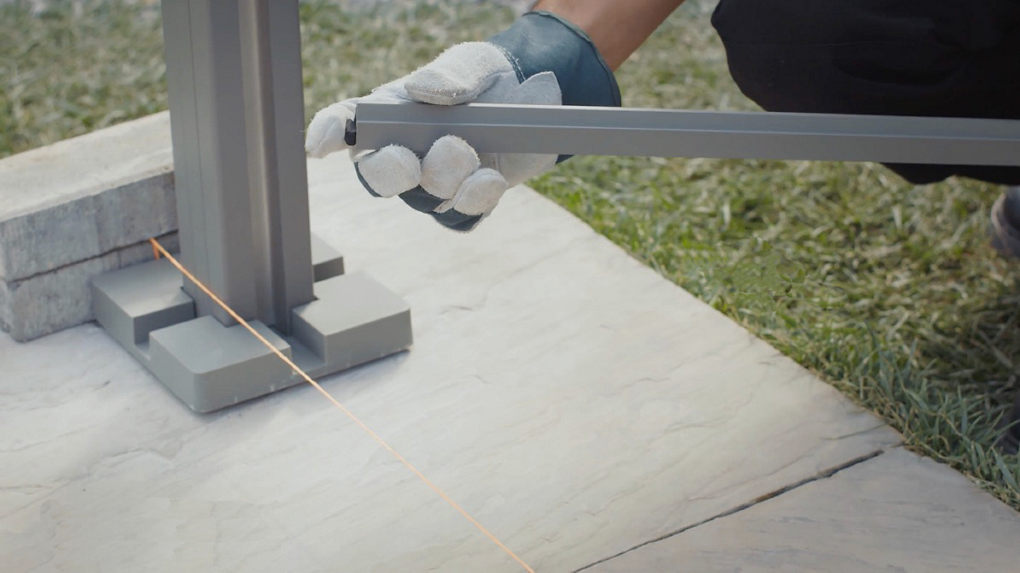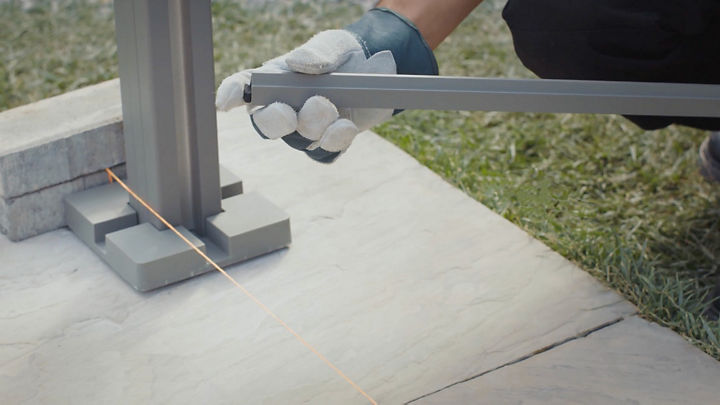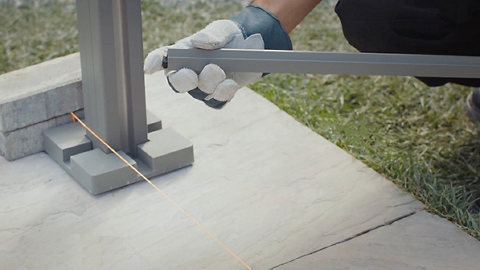How to cut your Neva composite or wooden slats to size
Cutting your Neva composite or wooden slats to size
If you need a shorter final fence at the end of a fencing run, you can cut wooden or composite slats (and their start/ finishing profiles) to size to fill the gap.
Alternatively, check if a decorative portrait half-panel or quarter-panel can fit neatly into the space.
If you go for the bespoke option and cut the slats, both wooden and solid composite Neva fence slats can be cut in the same way, using a panel saw or a mitre saw. You’ll also need to shorten the appropriate wooden finishing profile or the aluminium start and finishing profiles (used on composite slats), and we’ll show you what tools you need for the task and how to do it.
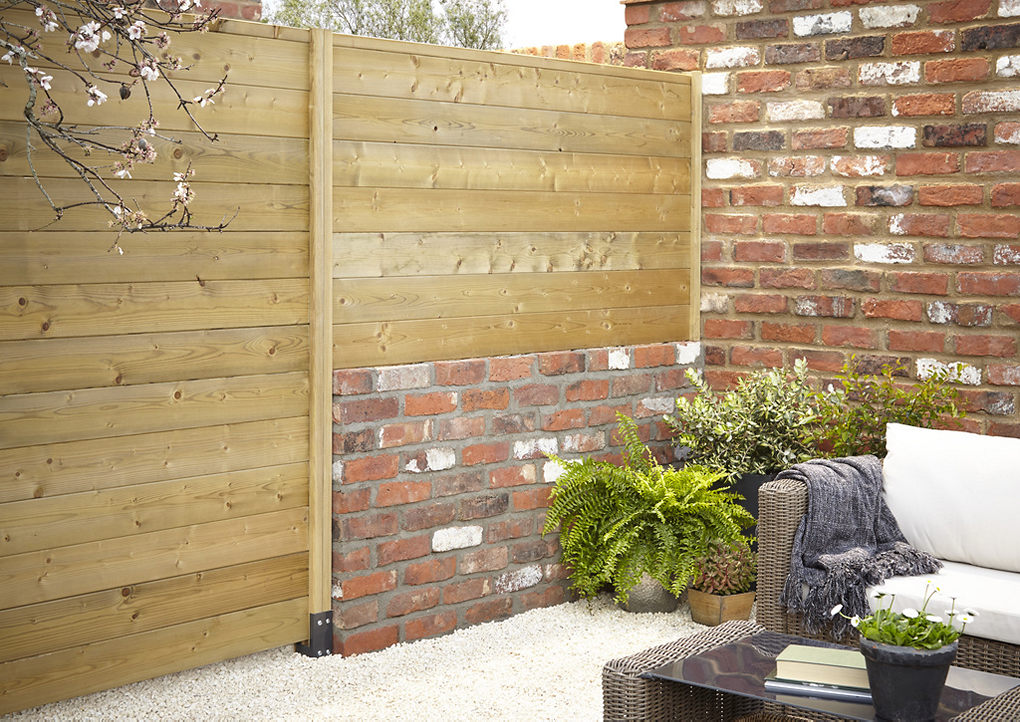

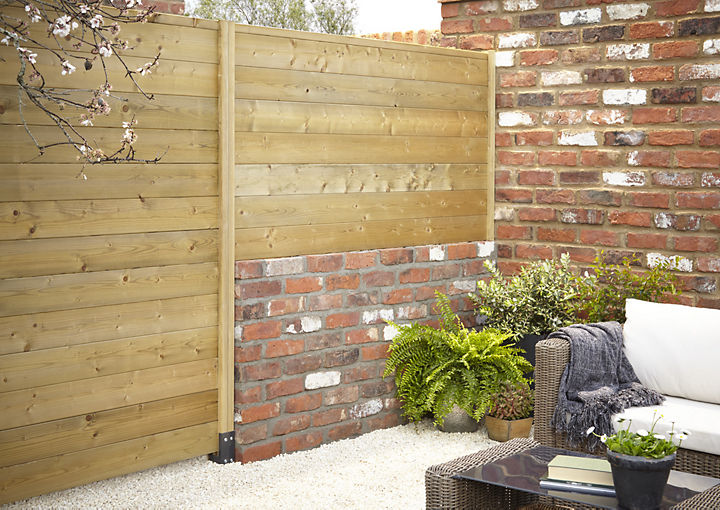
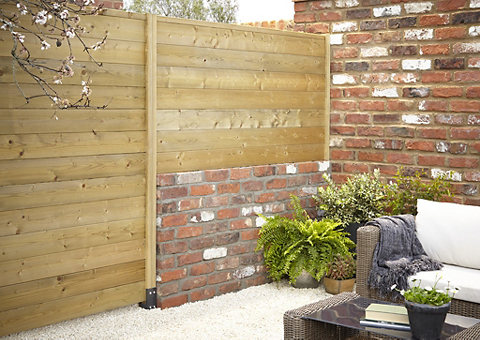
Safety first
- Whatever you’re cutting, wear safety goggles and a dust mask to protect you from the dust. Cut outside or in a well-ventilated area and wear suitable gloves when cutting wood and aluminium to protect you from splinters or shards of aluminium from the profiles.
- Cutting aluminium creates small metal shards, which could be sharp and hot. As well as safety goggles, a dust mask and gloves, long-sleeves are also recommended.
Tools for the job
- Tape measure
- Carpenter’s pencil
- Square
- Panel saw or compound mitre saw and the appropriate blade
- Workbench
- Hacksaw, to cut aluminium start and finishing profiles
- Hand coping saw to tidy rough cuts on composite slats
- Small paint brush
- End grain preservative
- Sandpaper (40 to 80 grit) to tidy rough cuts on timber slats
- Safety goggles
- Dust mask
- Rigger gloves
It is important to remember that composite and timber slats expand and contract in different temperatures. It is therefore important to allow for an expansion gap for the slats when measuring up the space between the posts.
Step 1
With a tape measure, measure the gap between the final two posts and deduct the total expansion gap depending on the posts.
If the slats are going between aluminium or wooden posts, allow an expansion gap of 5mm at each end (or 10mm total). Between steel posts, it’s 16mm at each end (or 32mm total).
Step 2
Use a square, such as a combination square, to mark an accurate cutting line onto each slat with a carpenter’s pencil.
Step 3
There are a variety of hand and powered saws available to cut wood or composite slats including table saws and jigsaws, so we’ve pulled out a couple of options you could use; a panel saw and the mitre saw. A panel saw is inexpensive and ideal if you have just a few cuts to make. A powered mitre saw is perfect for precise cuts every time.
If using a mitre saw, position the saw on a sturdy, flat surface (such as a workbench) and clamp it into place. Set the saw’s angle for the cut required. Unlock or release the saw so that the slat can be placed against the saw's back rest and clamped into place. Ensure the slat is adequately positioned and safely held in place so the slat does not drop or get ‘thrown’ by the blade. Slowly lower the blade and cut.
When cutting solid composite slats in a mitre saw, we recommend a blade with 20 to 40 teeth for the best results.
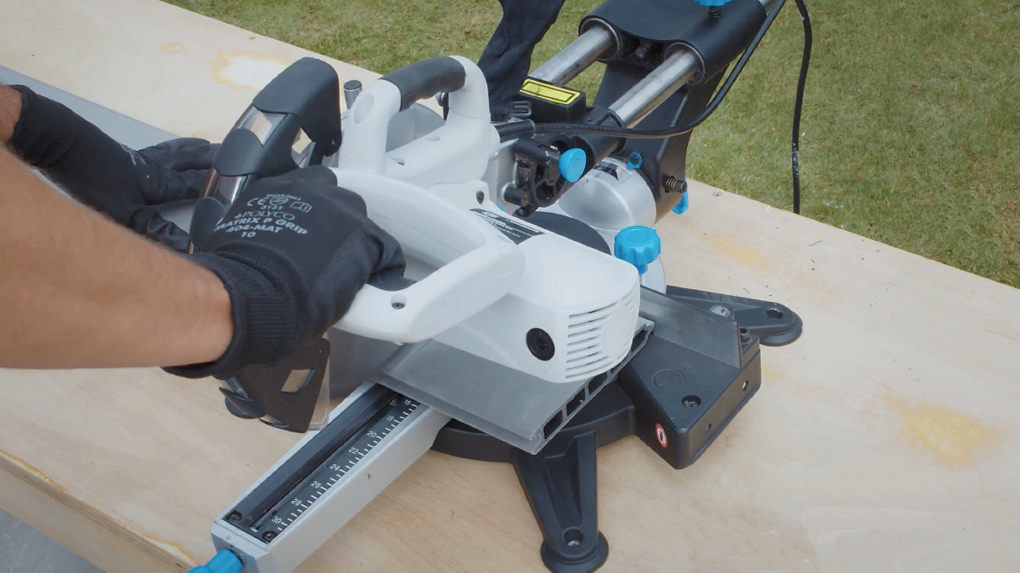

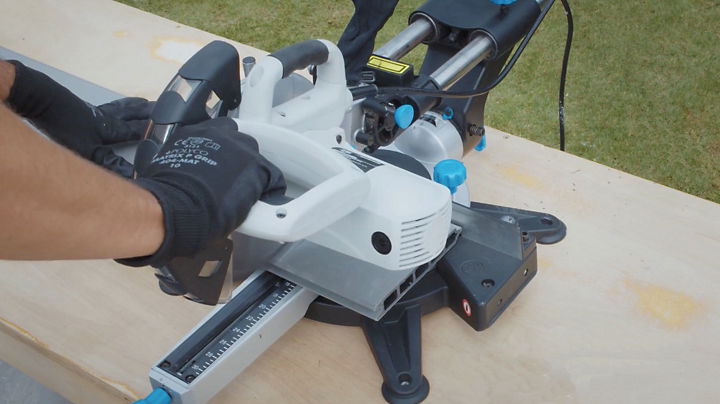
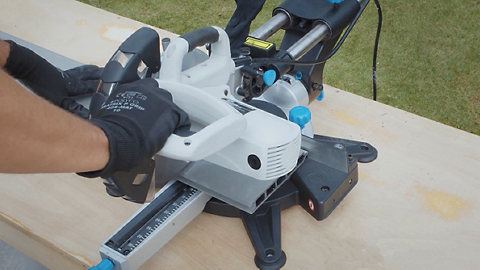
If using a panel saw, clamp the slat in a workbench and saw along the marked line. Ensure the slat is adequately positioned and safely held in place so the slat does not ‘drop’ when making the final cuts.
Step 4
A good clean cut should not leave any rough edges or loose material. If you do need to clean up a cut edge, use a hand coping saw to smooth finished edges on composite slats or use a 40 to 80 grit sandpaper on the cut ends of wooden slats.
Step 5
Apply a protective wood preservative (a decking end grain protector is a good option) to any cut timber ends with a brush before assembling the fence. There's no need to treat or seal the cut ends of composite slats.
Step 6
The wood finishing profile should also be cut to size and treated in much the same way as a wooden slat and don't forget to allow for the same expansion gap too.
An aluminium start and finishing profile (required for composite slats) can be shortened with a hacksaw in a workbench, and don’t forget to allow for the same expansion gaps, depending on the posts they are going between.
With the start and finish profile marked up and ready to shorten, clamp one piece at a time in a workbench before cutting each piece to size with a hacksaw.
Step 7
The rubber cap spacers can be slotted back into the aluminium profiles, at both ends, before positioning into place between the posts.
